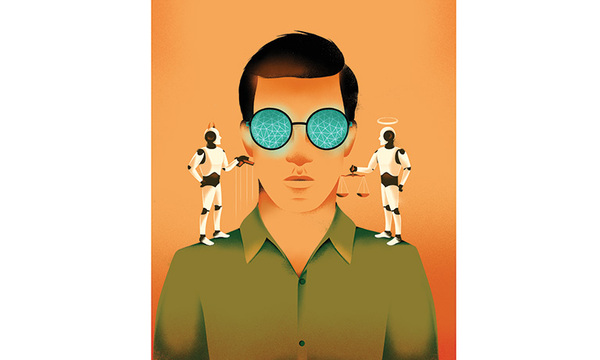
An American salesman, a Dutch academic and an Australian actor walk into an old house nestled some four miles outside Oxford, England.
It’s not the start of a bad joke, though they will hear stories of pranks pulled by the man who once lived there. It is only another day at The Kilns, the one-time home of the famed author C.S. Lewis. The residence, which is larger than it looks from the cul-de-sac, is now a study center and a destination for fans from the world over. The diversity of those who visit — both geographical and otherwise — is a testament to the ongoing impact and relevance of the professor’s work.
Having now lived in The Kilns for some nine months while studying here at Oxford, I find that I am even more impressed by the form of Lewis’ life and how different it is from our own. Only 50 yards away from the house is a small pond with a series of trails that lead up to Shotover Hill, which provides scenic panoramas of the southern Oxford valley. On a sunny day — or as close as England comes to one, anyway — it’s nearly impossible to resist the allure of tromping off on a good walk. In this, Lewis apparently had no self-control. His diaries even before he reached The Kilns show an eager willingness to forestall the rigors of life for the sake of the pleasures of a good swim or brisk jaunt.
The Kilns makes it easy to be leisurely, and provides a refreshing contrast to the bustle of university life. The environment makes it seem like leisure should be a necessary part of living, rather than simply the luxury that we afford it these days.
But the house itself contributes to a more reflective form of life as well, at least on the days when no tours come through. The house is filled with students and folks retreating to be renewed, which gives it a contemplative aura. That the house is so large makes it easy to disappear into one of the many common spaces and be taken up into another world altogether by reading, as Lewis himself would have done.
I had joked upon arriving that I hoped my writing and thinking might improve by living where Lewis lived, as though such things might linger in the atmosphere long after he had died. That hasn’t happened, but it has become clear that the genius of Lewis emerged in part because he had a life spacious enough for profound thoughts to fill it. The Kilns isn’t paradise and Lewis isn’t Jesus; but living there makes it easier to see how his environment shaped his thoughts and how different both were from our own.
Matthew Lee Anderson (’04) is living at The Kilns with his wife Charity (’04) while he pursues an M.Phil. in Christian ethics at Oxford University. His latest book, The End of Our Exploring: A Book About Questioning and the Confidence of Faith (Moody), is out July 1.
 Biola University
Biola University


